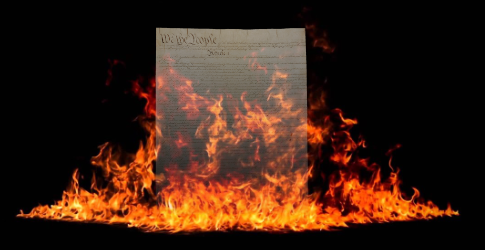
They may have broke deep and took water.
And all that remains is the faces and the names
Of the wives and the sons and the daughters.
How the United States fell to a coordinated attack from within by a fascist political party will be a subject for historians and political philosophers to argue over forever.
Like they do.
So, since I’ve argued here before that there’s no such thing as “too soon” for these sorts of debates, let’s get started on that today.
Because if not tomorrow, then certainly soon, it will be time to make something new in it’s place and to do that well we need to understand why the systems that had kept this from happening for 249 years finally failed.
This will not be a comprehensive list, of course; this is a blog, not a monograph.
But to start us off, here are five important areas that we need to pay attention to.
Social norms are not enough.
The United States depended on informal social norms for a lot of its defenses against internal threats, rather than laws.
Because laws are difficult to pass and maintain, and Constitutions are even harder; and, ironically, we had a strong social norm against laws that explicitly bound the majority while leaving the ruling class free.
So it was easier, and more dignified, to just drift along on norms than to ever formalize and codify restrictions on the political class.
But when a coordinated minority of the political class comes into conflict with norms, the norms will definitely lose.
We stopped critically evaluating State and officials’ actions.
Lawyers refer to this attitude as a “presumption of normality”, or “deference”.
They think it’s a good thing; they’re very wrong about that.
The courts, Congress, the press and the voters all came over time to just presume that anything the State did should be treated as correct, rather than requiring that any change should have to be demonstrated to be justified by strong argument and supported by existing law.
This allowed anyone with a position of power within the State to make extensive changes without any real examination; these changes would then be treated as being just business as usual.
The citizens had no way to challenge fundamental changes within the State.
The courts developed the concept of “standing” as a way to keep from being overwhelmed by frivolous cases; the idea being that you had to be directly affected by something to be able to ask the courts to get involved in it.
While the basic idea is sound, over time this expanded to the point that to have standing today you need to be able to prove a direct, personal, financial harm before you can get access to the courts.
Which is limiting things way to far, and has resulted in it being literally impossible to challenge many State actions , since no one can meet the standing requirements.
The “checks and balances” were weak to coordinated attacks.
The United States was formed before we had political parties, though many of the founders foresaw parties arising and wrote about the dangers.
And then did nothing about it because, hell, political science didn’t exist and they had no idea what to do about it.
So the system ended up being very, very weak against exploitation by political parties.
Since it’s inevitable that voters will organize in ways that optimize their effect in a political system, effective checks on corruption depend on the existence and viability of many political parties to prevent collusion.
We didn’t have that.
The world sped up, but the State did not.
Transportation, communication, the rate of change itself; the world today is much, much faster than it was 249 years ago.
But the State is, if anything, slower now than it was then.
It is possible today for a malicious or corrupt official to have done irreparable harm before a court can even hear, much less decide, a case challenging their actions or voters have an opportunity to remove them from office.
The State, and especially the courts, need to be able to respond much more quickly.
This is not an exhaustive list.
And fixing any one of these things would probably not have prevented the United States’ fall; it’s possible that having fixed all of them would not have been enough.
But it would have given the country a fighting chance.
So when you think about what to build next and how to prevent this happening again, remember these points.
And don’t make these mistakes again.
- No Kings’ Horses: The United States Cannot Be Fixed - 2025-12-04
- We Know That Ukraine Knows: U.S. Security Guarantees Are Worthless These Days - 2025-12-03
- Archive: On Power And Authority - 2025-12-02
